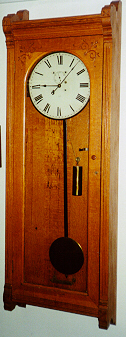From the 75th Anniversary edition
Hampton Union
July 23, 1975
(1797 - Hampton Town Hall - 1949)
By John M. Holman
Tuck Museum Curator, 1970 - 1983
Hampton Historical Society
Rev. Roland D. Sawyer had the following to say in his column "View and Reviews of Old Rockingham" in a 1948 issue of the Hampton Union: "Ater the old church was vacated, the town began to use it for town purposes, and continued to do so without any alterations up to 1660. The old meeting house, as it was then called, stood sidewise of, and mainly in the street, with a tall steeple at the west end, which contained Grandsir Hardin’s favorite Pet (the bell) and its apex crowned with a quaint weather vane that many still remember. During this year, however, land was purchased, the steeple taken down, and the old building was swung around and moved back, end to the street. The gallery, which occupied three sides, and most of the box pews, were removed; the upper story floored over and other alterations and repairs made until it became quite a respectable building."
Notwithstanding, as time wore on, it became apparent that a more commodious and modern structure was needed, and as the massive frame work of the old building was found to be in a good state of preservation, the town decided four years ago to thoroughly renovate the same and build an addition to the front, which was accordingly done."
Fifteen months after the foregoing article was written, in March 1949, the Hampton Town Hall burned and was never rebuilt. The original Town Hall sign is on permanent display at the TUCK MEMORIAL MUSEUM.
When the Town Hall ruins were removed from the fire site and transported to the Municipal Town Dump, the sign itself was among the debris. My father, Marshall S. Holman, was taking some trash to the dump on the same day and noticing the Town Hall sign inches away from flames (they used to burn the dump in those days), retrieved it before it was engulfed in flames and put it in his barn for safe keeping. Years later, when the sign was found in the barn, it was ultimately removed to the Tuck Museum for permanent display, where it can be seen today.

O. R. Cummings, author of "TROLLEYS TO THE CASINO - Exeter, Hampton & Amesbury Street Railway", published January 1, 1969, made further mention of the Hampton Town Hall fire in his history of the E.H.&A. trolley system: "An interesting aftermath of the municipal operation of the Exeter, Hampton & Amesbury (Street Railway) occurred in March 1949 when the Hampton Town Hall was destroyed by fire. One item of property saved was an old wall clock, which formerly had hung in the office at the Hampton carhouse. When the barn was sold in 1927, the clock was installed in the Hampton town clerk's office, where it became known as the $80,000 clock, symbolizing Hampton's loss in its ill-fated street railway venture. Stored briefly after the fire, it later was returned to useful service in the town clerk's quarters in a new municipal office building."[It now can be seen in the Selectmen's Meeting Room in the "New" Town Office building at 100 Winnacunnet Road and still keeps good time.]
"The Indian House"

From the 75th Anniversary edition of Hampton Union, July 23, 1975:
"The Indian House", as folks 'round these parts called it, was located in front of the fish houses at North Beach, near the deserted Coast Guard Station. Legend was that one of the last of the Indians of this area had lived in it at one time or another. It was torn down in the early 1920s and what was left of it was razed. Time and the elements had taken their toll of the dwelling. A well for drinking water and domestic use can be seen at corner of the house. (Courtesy of MHGMHA.)
From Volume Three, Peter E. Randall's History of Hampton, NH, 1638-1988; Chapter 8, page 339:
The fish houses, and, at center, the old home of William Moulton, a fishmonger. Later owned by Reverend Erasmus Eldridge, a minister of the First Congregational Church, the house was later purchased by Amos Leavitt and rented for a number of summers to Old Town, Maine, Indians who lived there and sold sweet grass baskets, giving the place the name, "The Indian House." Frank Leavitt eventually inherited the building and had it torn down about 1922, replacing it with a shop that eventually became the Mace fish market. (Photo courtesy MHGMHA.)
